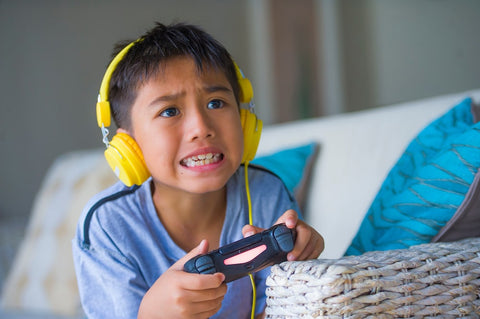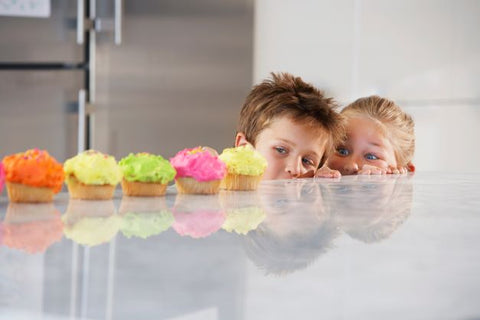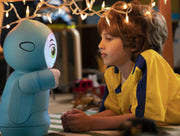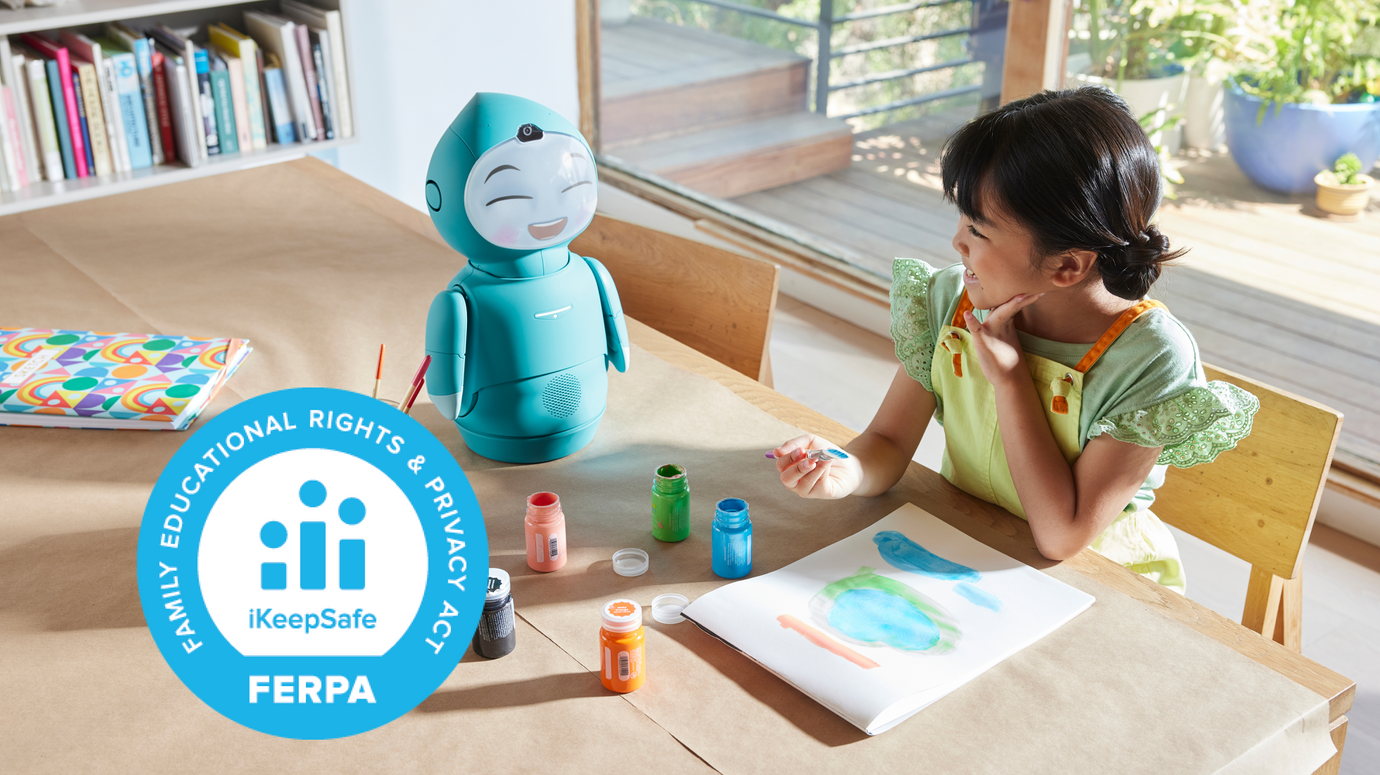Marshmallow Studies - Delay of Gratification

Big Ideas in Developmental Psychology
A Close Look At What the Marshmallow Experiments Tell Us About Kids
Picture this: an adorable 4 year old girl is sitting at a desk in a room all alone. Her legs dangle from the tall chair; she swings them back and forth as she stares intently at a single marshmallow sitting on a plate in front of her. That marshmallow is so incredibly tempting in all its sugary goodness – so much so that she has to sit on top of her hands to keep them from secretly reaching out to snatch it. She sings a little song over and over again to help her pass the time. Minutes pass, and still she sits there, resisting her desire to grab the marshmallow and gobble it up. What in the world is she doing there by herself? And why can’t she eat the marshmallow?
The Marshmallow Experiment and Kids
If you know anything about child psychology, you probably already know that this girl isn’t living a preschooler’s worst nightmare. She’s participating in the now famous marshmallow studies, first conducted at Stanford University by Walter Mischel in the 1970’s. She does eventually get to eat the marshmallow. In fact, she can eat it whenever she wants. The catch, of course, is that if she waits, she’ll get two marshmallows. How long can she resist the temptation of immediate gratification and hold off for a bigger reward down the line? Mischel started this series of studies to explore a burning question: how do kids develop self-control? And it turned out to be a question that spawned decades of research.

What is the Marshmallow Study?
The original studies went more or less like this: kids (mostly 4-year-olds) were brought to a room where there was one desirable treat (usually a marshmallow) and a bell on a table.
The experimenter said that they were going away for a while and that if the kids waited for the experimenter to return they could have two treats. Or if they couldn’t wait, the kids could ring the bell to call the experimenter back immediately – but in that case, the kids would only get one treat.
The experimenter then left the kids alone – until the kids rang the bell, or for the maximum time allotted, which was usually 15 minutes. The question for each kid was: did they ring the bell or did they wait the full time? And while they were waiting, what did they do to pass the time?
Videos from the original experiments are not publicly available, but there are many videos of replications available on YouTube. It’s just adorable watching how kids handle this dilemma. Check them out the next time you’re in the mood for a good chuckle.
What the Marshmallow Study Showed Us About Child Psychology
Leaving the clear cute factor behind, these studies started to really take the world by storm when years later, Mischel and colleagues re-visited a bunch of kids who had taken part in his original experiments to see how they were doing. With these subsequent studies, the researchers started to put together a picture distinguishing kids who showed more self-control (that is, kids who could delay gratification), from kids who showed less self-control. Researchers found correlations (aka relationships) between a kids’ ability to wait and intelligence; social responsibility and competence; academic performance; psychological, physical, and economic health; obesity; and criminal convictions. In other words, the ability to delay gratification seemed to be related to all sorts of long term positive outcomes whereas the inability to delay gratification was related to less positive outcomes.

And that’s where pop psychology and the media had a field day. Was it really that easy? To predict a kid’s success in life all you have to do is see if they can wait 15 minutes to eat a marshmallow? It’s a really appealing story. Unfortunately, it’s just not that simple.
Self Control in Kids and Positive Outcomes
There’s a good amount of research to support the idea that in general, the ability to practice self-control is related to positive outcomes. But with regards to the marshmallow studies, more recent research hasn't been able to replicate (aka, repeat) those original results. For example, one major study used a more diverse sample of kids than the original studies and found just a very small relationship between ability to delay gratification at age 4 and academic achievement at age 15 – and no relationships with any other outcome. What could be going on? There could be lots of explanations. One is that perhaps a kid’s ability to delay gratification has to do with other factors – such as their family’s socioeconomic status – which in turn also are related to the various outcomes later in life.
Are Marshmallow Studies Accurate?
And actually, Mischel himself says that the marshmallow measure doesn’t matter nearly as much as the media makes it out to matter. That’s actually good news for those of us trying to raise and educate kids who we know would reach out and grab that marshmallow right away without giving it a second thought. Mischel says “the idea that your child is doomed if she chooses not to wait for her marshmallows is really just a serious misinterpretation.” That said, the marshmallow studies still do have tremendous value. They’ve told us wonderfully interesting things about psychology, about kids’ development, and about how to teach kids and adults to practice self control. For instance, they’ve inspired other researchers to explore what makes some kids wait and others not, and what situations might help kids delay something desirable.
Patience in Kids and Social Factors
The ability to wait might not just depend on a kid’s personality, but might also be influenced by social factors. For example, in one set of studies, kids waited longer if they thought that a teacher or a peer would be told how long they waited, suggesting that they’re thinking about what other people will think of them. Kids can also wait longer if they’re cooperating with another kid. That is, when two kids do the study together and are told that they get more marshmallows only if both of them wait until the end, kids tend to wait longer. And finally, kids are tuned in to how reliable the people around them are. In fact, they’ll wait less time when the experimenter hasn’t been trustworthy and hasn’t followed through on previous promises for bigger rewards. The overall story here is that kids are super attuned to social cues and will adjust their behavior based on the social situations they find themselves in.

Another curious thing that’s come out of decades of watching kids waiting – or not waiting – to eat marshmallows is that researchers have identified a generational difference. Kids today, on average, tend to wait just a little bit longer than kids did in the 1960’s and 1980’s. The research finding this difference is new, so it’s impossible to point to any particular explanation for the finding. But it sure is an interesting little tidbit as many despair over the impact of technology and a culture seemingly focused on immediate gratification.
Mischel’s Self Control Frameworks
However, perhaps the most interesting thing to come out of these studies is that Mischel and colleagues have used these studies to define a concept of self control. In particular, Mischel proposed a framework for representing how we respond to temptation.
He named two opposing forces. The hot, or “go,” system is fight or flight and crucial for basic survival. It’s fast, emotional, and reflexive.
On the other hand, the cool, or “know,” system is slow, cognitive, and reflective. It’s also crucial for survival in our society, but in a different way.
When you’re guided by your hot system, you’re controlled by the stimuli around you. When you’re guided by your cool system, you’re practicing self control. Both systems are important. A life driven entirely by a cool system is missing excitement. But a life driven entirely by the hot system means that you’re constantly at the mercy of temptations around you. So, though it’s okay to accept some of the rush of the hot system, in general, you want to aim to control the marshmallows in your life rather than let the marshmallows control you.
Self Control Can Be Taught to Kids
And that brings us to one final, but supremely important lesson learned from the marshmallow studies: Self control is a skill that can be taught. Mischel noted anecdotally that on average, 3-year-olds tend to approach the task differently than 4- or 5-year-olds. The younger kids may plan on waiting but have no idea how to resist the temptation, and so end up eating the marshmallow. But the older kids start to be able to come up with strategies that will help them wait. They distract themselves, singing songs or talking out loud. They avoid looking at the marshmallow. And then towards 5- or 6-years-old, kids start using more abstract strategies like pretending the marshmallow isn’t there, or turning their focus away from how desirable it is. And this is great news! It means that parents, caregivers, teachers, and community members all have a chance to help kids learn how to exert self control!
Creating an Environment for Self Control
The first thing to do is create an environment that gives kids the best chance possible of using their cool system to make choices. Two big factors for this are stress and trust. First, stress can wreak havoc on anyone’s ability to think rationally. When stress levels are high, we’re more likely to be overly taxed and therefore not able to use our cool system. Second, kids need to trust that future rewards will actually materialize. That is, if resources are scarce, or adults are untrustworthy, why would kids wait for something that may or may not actually happen? This goes for family situations, but at a community level as well. Two of the best things we as individuals and as a society can do to help kids delay gratification (whether it’s eating a marshmallow or staying in school or avoiding drugs) and work towards a long goal is to help reduce chronic stress levels and build trust.
Another biggie for us adults is to model how we delay gratification ourselves. Do you avoid buying extra clothes because you’re saving up for a family vacation? Kids are watching your behavior already, so make it explicit. Talk it all out with kids to make it crystal clear how you put off immediate rewards so that you can get bigger ones later.

Next are specific strategies that we can teach kids to help them “cool the now and heat the later,” as Mischel would say. In other words make the immediate gratification less desirable and the future reward more desirable. Kids in the marshmallow studies did a great job of demonstrating strategies like distraction or distancing. Distraction helps redirect focus onto something other than how much you want immediate reward. And distancing moves the immediate reward farther away making it harder to grab ahold of it.
Finally, you can help kids identify their hot spots. What are they drawn to? What’s hard for them to resist? What kinds of things tend to get them off track? Once you’ve helped them answer these questions then help them form a plan for how they’ll handle those hot spots. Mischel calls this process making an if-then plan. The “then” can be any of the strategies listed earlier like distance or distraction. For example, if I’m tempted to check my phone instead of doing homework, then I’ll move the phone to another room. Or the “then” can be whatever will help reduce temptation and get kids focused on making decisions that move them towards their end goal. In other words, an “if-then” gives kids a game plan for what to do when things get tough.

It doesn’t take a bunch of studies to tell us that sometimes it’s necessary to hold off on immediate gratification so that we can build towards a reward in the future. Many kids sacrifice time so that they can study in the hopes of eventually going to college. Adults go to work rather than relax all day because they trust that they’ll get paid on payday. Some of us choose not to eat that second slice of cake because we want to be rewarded with good health and fitness in the long run. And though the marshmallow task isn’t exactly a test that can predict a kid’s future, it is a measure that has done a lot to inform how we think about self control. It has allowed us to watch how self control strategies develop – and how they can be encouraged and taught. And to know that is gratifying indeed.






